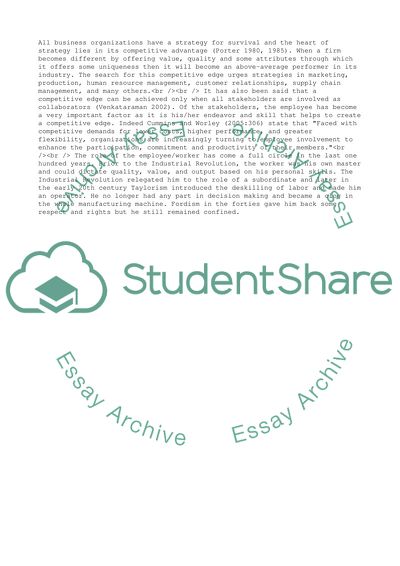Cite this document
(Unlearning as a Strategy Research Proposal Example | Topics and Well Written Essays - 4000 words, n.d.)
Unlearning as a Strategy Research Proposal Example | Topics and Well Written Essays - 4000 words. https://studentshare.org/business/1725260-how-an-unlearned-organisational-culture-effects-strategy-and-how-it-could-be-turnaround-to-reach-competitive-advantages
Unlearning as a Strategy Research Proposal Example | Topics and Well Written Essays - 4000 words. https://studentshare.org/business/1725260-how-an-unlearned-organisational-culture-effects-strategy-and-how-it-could-be-turnaround-to-reach-competitive-advantages
(Unlearning As a Strategy Research Proposal Example | Topics and Well Written Essays - 4000 Words)
Unlearning As a Strategy Research Proposal Example | Topics and Well Written Essays - 4000 Words. https://studentshare.org/business/1725260-how-an-unlearned-organisational-culture-effects-strategy-and-how-it-could-be-turnaround-to-reach-competitive-advantages.
Unlearning As a Strategy Research Proposal Example | Topics and Well Written Essays - 4000 Words. https://studentshare.org/business/1725260-how-an-unlearned-organisational-culture-effects-strategy-and-how-it-could-be-turnaround-to-reach-competitive-advantages.
“Unlearning As a Strategy Research Proposal Example | Topics and Well Written Essays - 4000 Words”. https://studentshare.org/business/1725260-how-an-unlearned-organisational-culture-effects-strategy-and-how-it-could-be-turnaround-to-reach-competitive-advantages.


